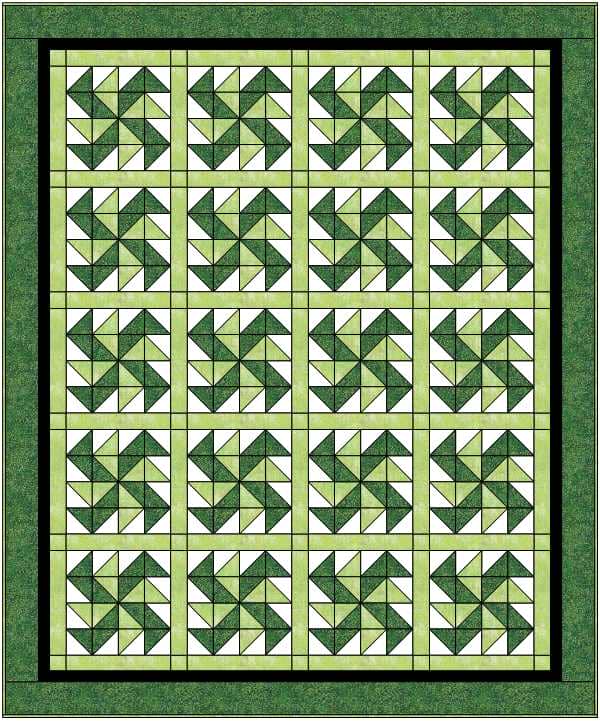Quilt Block: Yankee Puzzle Quilt Block Tutorial
The Yankee Puzzle Quilt block is such a quick and easy quilt block to make and it looks great. You can see some variations on putting this block together at the end of the post.
The block is made entirely of half-square triangles so as long as you can make those, you won’t have any problems making this quilt block.
If you don’t know how to do this we do have a tutorial on how to make half-square triangles that will help you.
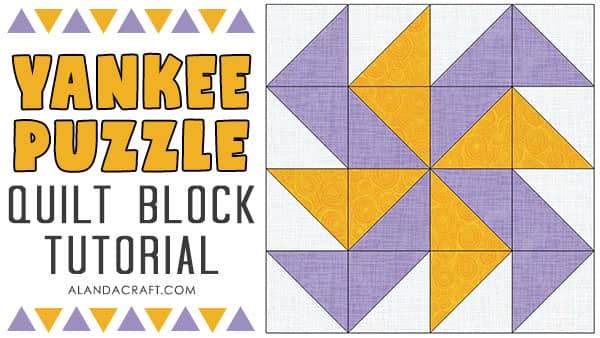
Watch the video tutorial below or scroll down for the written instructions
What You Need:
| Finished Size | Fabric 1 (White) | Fabric 2 (Dark) | Fabric 3 (Floral) |
|---|---|---|---|
| 6" | 6 @ 2 1/2" x 2 1/2" | 6 @ 2 1/2" x 2 1/2" | 4 @ 2 1/2" x 2 1/2" |
| 8" | 6 @ 3" x 3" | 6 @ 3" x 3" | 4 @ 3" x 3" |
| 10" | 6 @ 3 1/2" x 3 1/2" | 6 @ 3 1/2" x 3 1/2" | 4 @ 3 1/2" x 3 1/2" |
| 12" | 6 @ 4" x 4" | 6 @ 4" x 4" | 4 @ 4" x 4" |
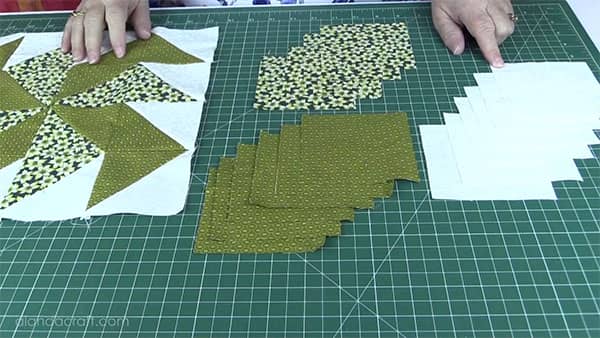
Tools Used in this Tutorial:
You can check the latest prices at Amazon by clicking on the links below:
- Creative Grids Ruler 8½” x 24½” – This is our go to ruler for most projects. Especially when you are cutting across the width of the fabric. Although when we get to cutting smaller blocks we tend to use the Creative Grids 6.5″ x12.5″ ruler. Both are excellent rulers as you can move the ruler around freely until you have it lined up in the position that you want to cut and then when you apply pressure on the ruler, it grips firmly in place. So there is less chance of ruler slipping and causing mishaps.
I did have another brand ruler in the past that didn’t have any grip and consequently it slipped a few times resulting in ruined fabric.
Another thing I like about the Creative Grids rulers is that they are easy to read. - Olfa Non-slip Ruler 6 1/2 x 61/2 – Olfa is another brand of ruler that I like to use and this little square ruler is ideal for squaring up your quilt blocks. Olfa do have square rulers in a range of sizes but this is one I tend to use a lot for my quilt blocks.
- Olfa 24″ x 36″ double sided healing mat – A self healing mat is pretty much a must have for quilting and sewing projects. We use the larger Olfa mat which is ideal for bigger projects. Of course the amount of space you have in your craft room with determine which is the best size for you, and Olfa do have a range of mats available. Another one of their mats that I really like to use when I’m squaring up blocks is their rotating mat. This mat makes it so easy to trim your blocks as you simply turn the mat not the fabric.
- Olfa 60mm rotary cutter – I tend to like the rotary cutter with the straight handle and the 60mm cutter is one I use most of the time. I find the straight handle to be comfortable to hold and use. But this is just my personal preference, you may prefer the 45mm rotary cutter with the slightly curved handle and the trigger action.
- Oliso Iron – when I first saw the Oliso Iron, I thought “Wow, that is amazing”. I love the way it pops up when you place it on the ironing board. You don’t have to worry about leaving it standing on the ironing board because the iron pops up on it’s little feet so that the base plate isn’t in contact with the ironing board surface. So if you get interrupted and walk away, you have that peace of mind knowing that your iron isn’t going to burn through your ironing board cover and catch fire. The iron also turns off after 30 minutes, so safety features are paramount.
- Gutermann Sew All thread – We use Gutermann sew all thread for pretty much all our sewing and keep large spools of white, cream and black on hand. The Gutermann range of colors is really vast so you are bound to find a color that matches the project you are working on. We have quite a stock of the smaller spools of thread in various colors.
- FriXion Pens – These pens are great for marking seam allowances as the mark comes off when you iron over it with a hot iron. We keep a supply on hand and mainly use black on most of our projects although the pens are available in other colors. For black fabric I use chalk instead of a FriXion pen. One thing you need to know about FriXion pens is that the mark may reappear in cold climates and you will see traces of where you made your mark. So you definitely wouldn’t use these pens on a show quilt, but as I don’t make show quilts I use these pens all the time. The marks I make are generally small and would be hardly noticeable even if the ghost of an outline did show up in cold weather.
Method:
- Lay out the main fabric squares, right side facing up.
- Lay 4 of the contrast 1 piece, right side facing down, on top of 4 of the main colored squares.
- Lay 2 of the contrast 2 pieces, right side facing down, on top of 2 of the main colored squares.
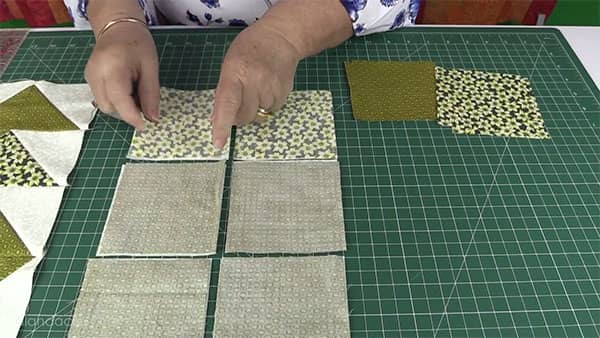
- Lay the remaining squares of contrast 1 & 2, on top of each other, right sides together.
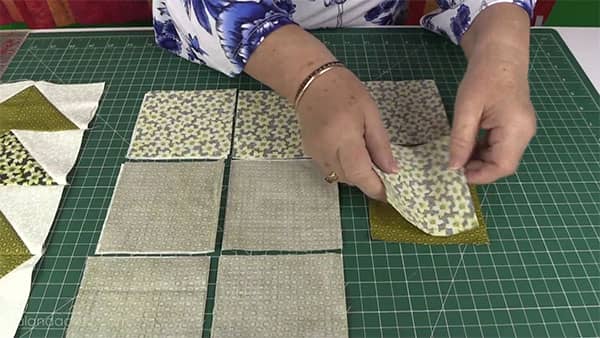
- Draw a line diagonally across each pair of squares.
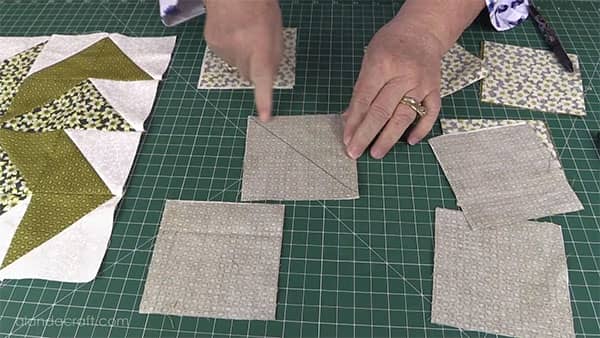
- Sew a ¼” seam on either side of the drawn line.
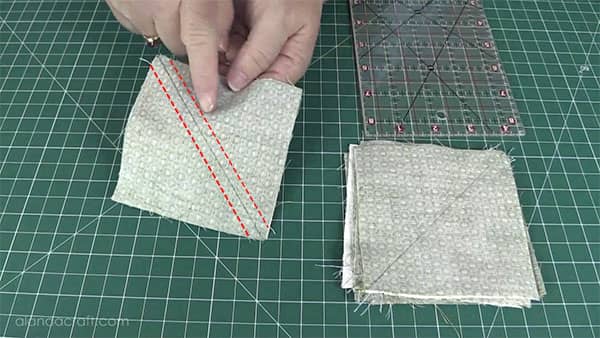
- Slice across the diagonal line that you drew across each set of squares.
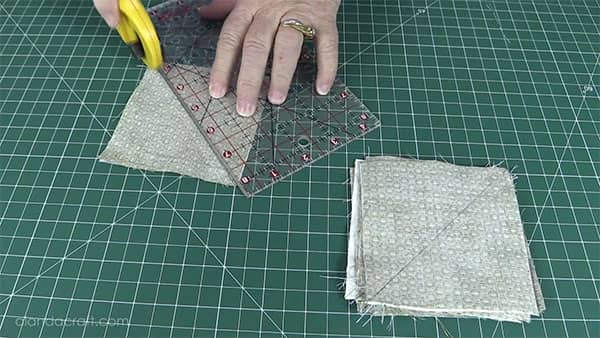
- This will give you 2 half square triangles (hst”s).
Cut the rest of the squares in the same way. You will now have :
- 8 half square triangles in the main and contrast 1 color
- 4 hst’s in the main and contrast 2 color
- 4 hst’s in the two contrasting colors.
- Press the seams to the dark side.
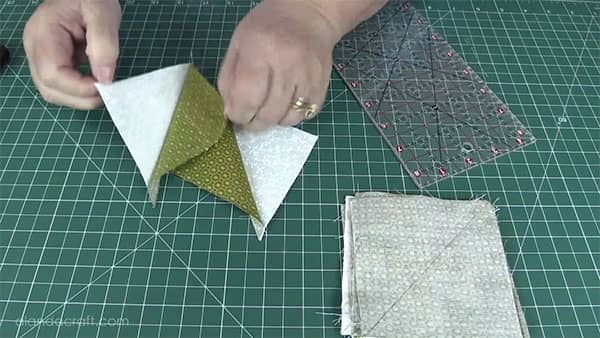
Trim all of the hst’s to following depending on your finished block size:
- 6″ block – trim to 2″
- 8″ block – trim to 2½”
- 10′ block -trim to 3″
- 12″ block – trim to 3½”.
If you need help with trimming your half-square triangles, here is a link to our video tutorial on how to do it. We also show you how in the video tutorial at the end of this post.
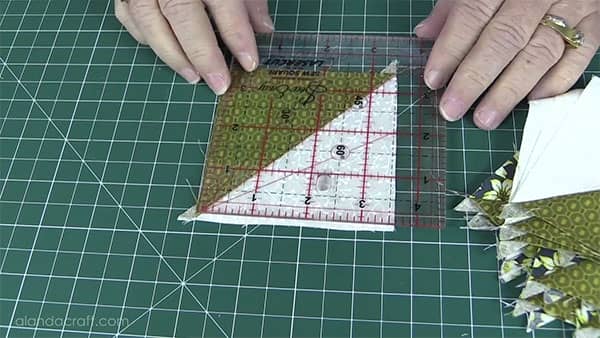
- Lay the pieces out in the following manner.
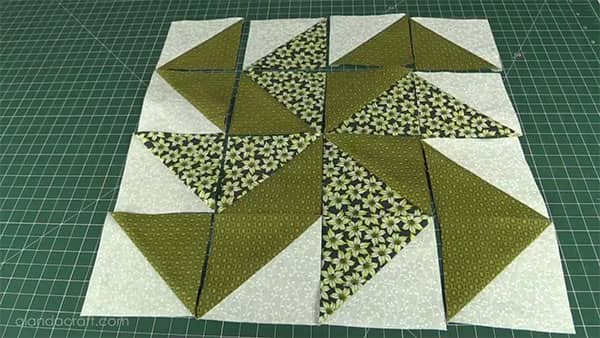
- Sew the squares together into rows.
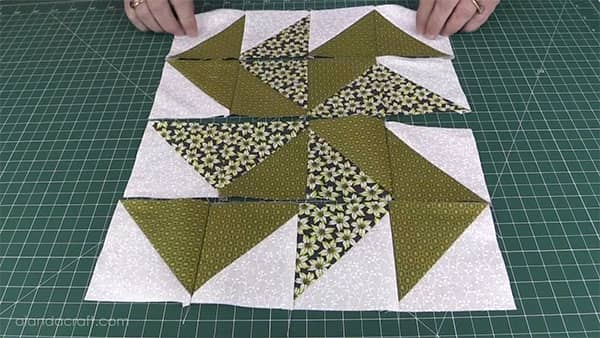
- Lay one row on top of the other, right sides together.
- Nest the seams so that they line up nicely when you sew the block together.
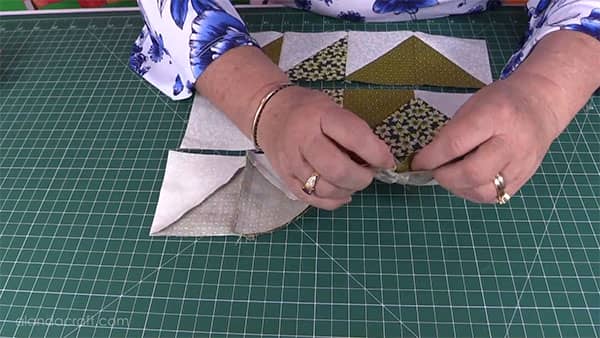
- Sew the first two rows together with a ¼” seam.
- Repeat for the other two rows.
- Sew the two sets of rows together across the middle seam.
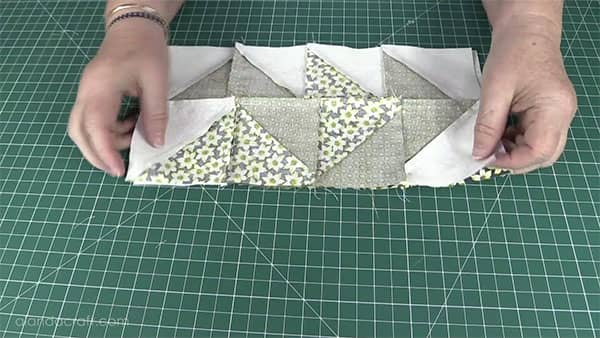
You have now finished your Yankee Puzzle Quilt Block. How easy was that?
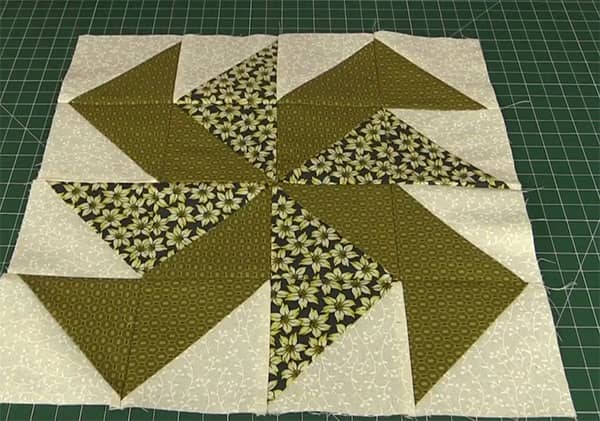
Here are some ideas for using this lovely block in a quilt:
- Orange and purple without sashing between the blocks.
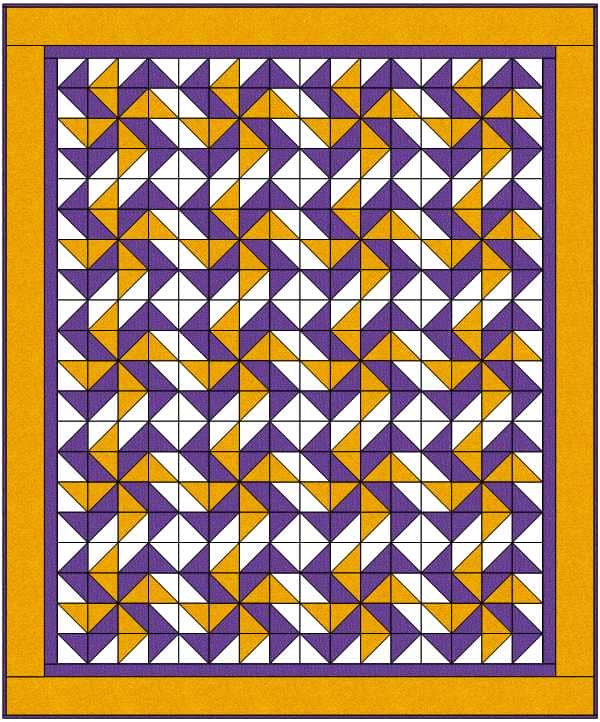
2. Orange and purple with sashing between the blocks.
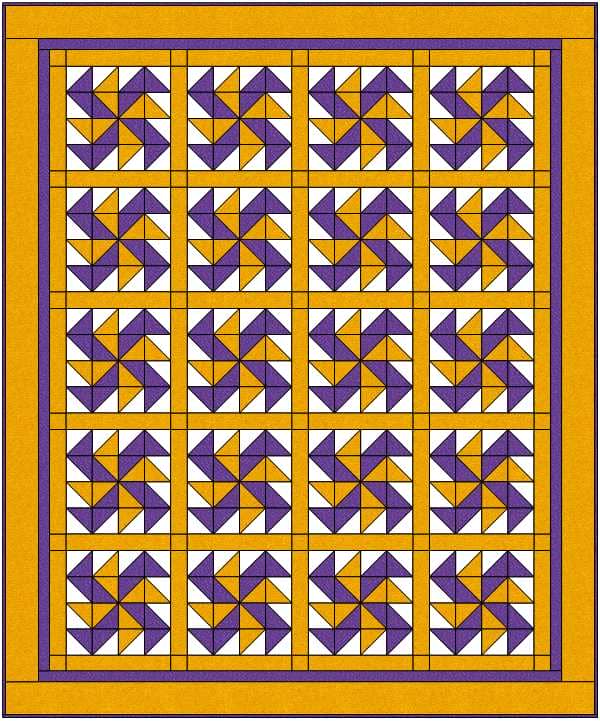
3. Red and green variation – without sashing.
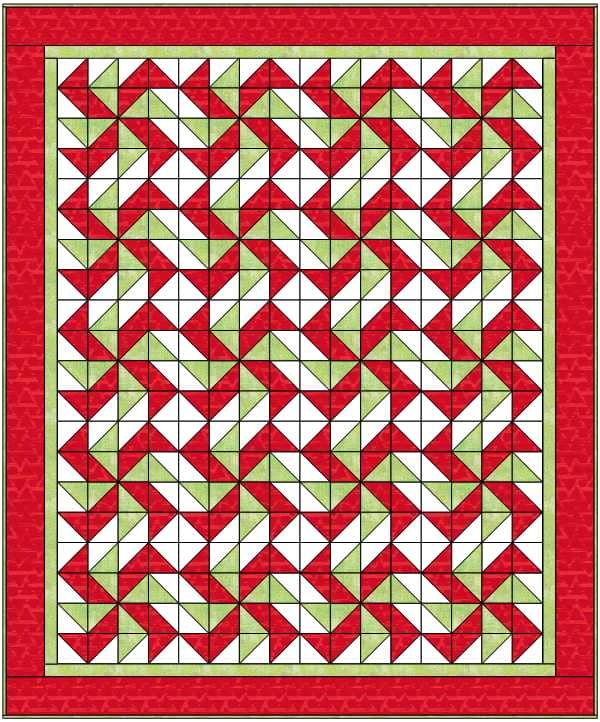
4. Red and green with sashing.
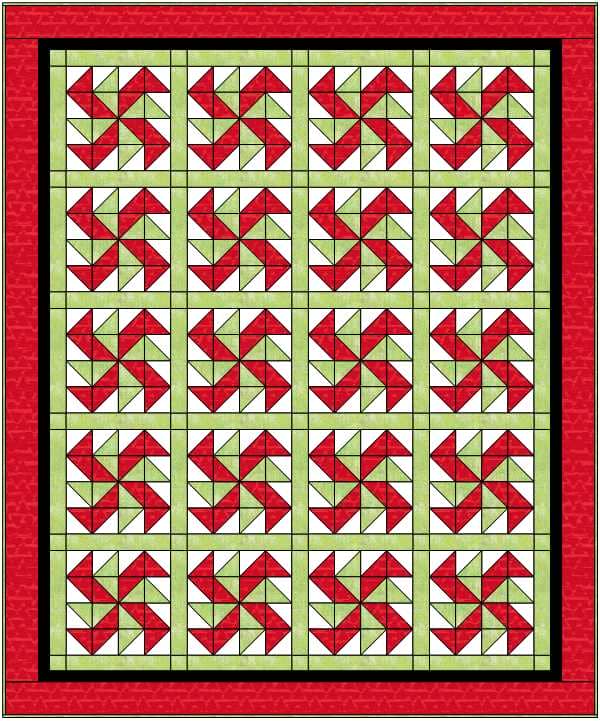
5. Blue and green with sashing
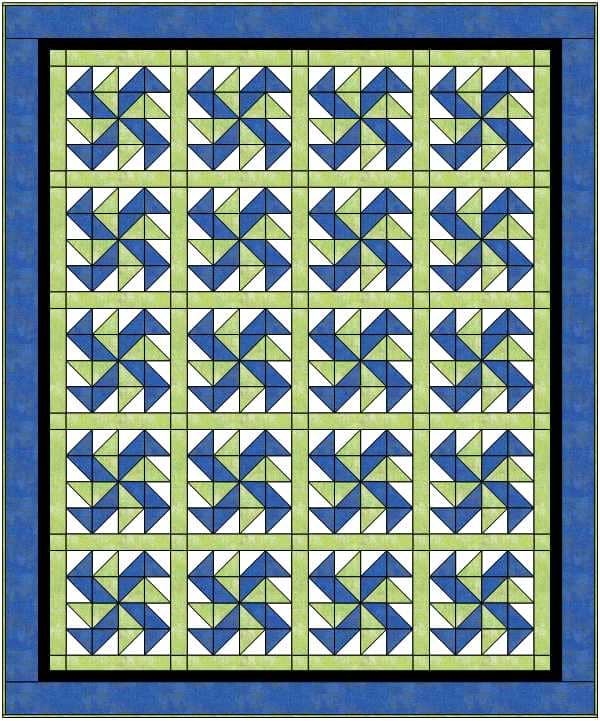
6. Dark green and light green with sashing.
